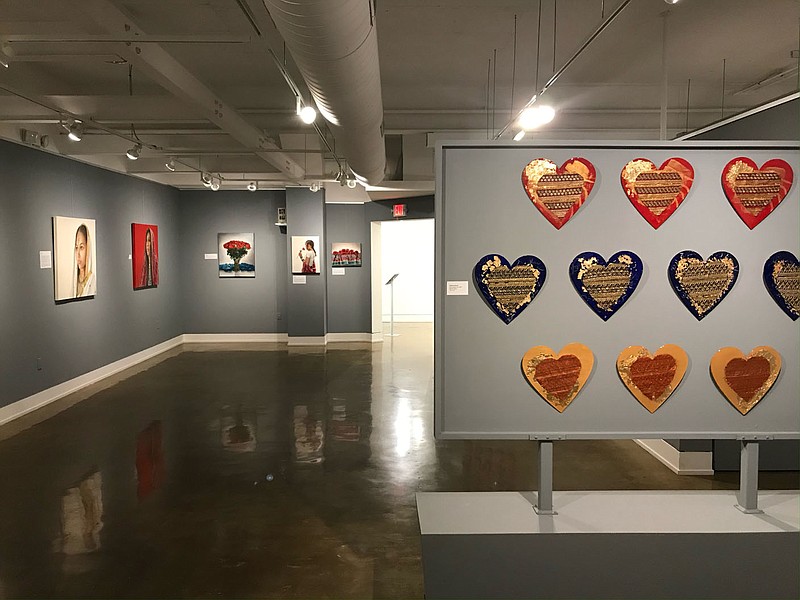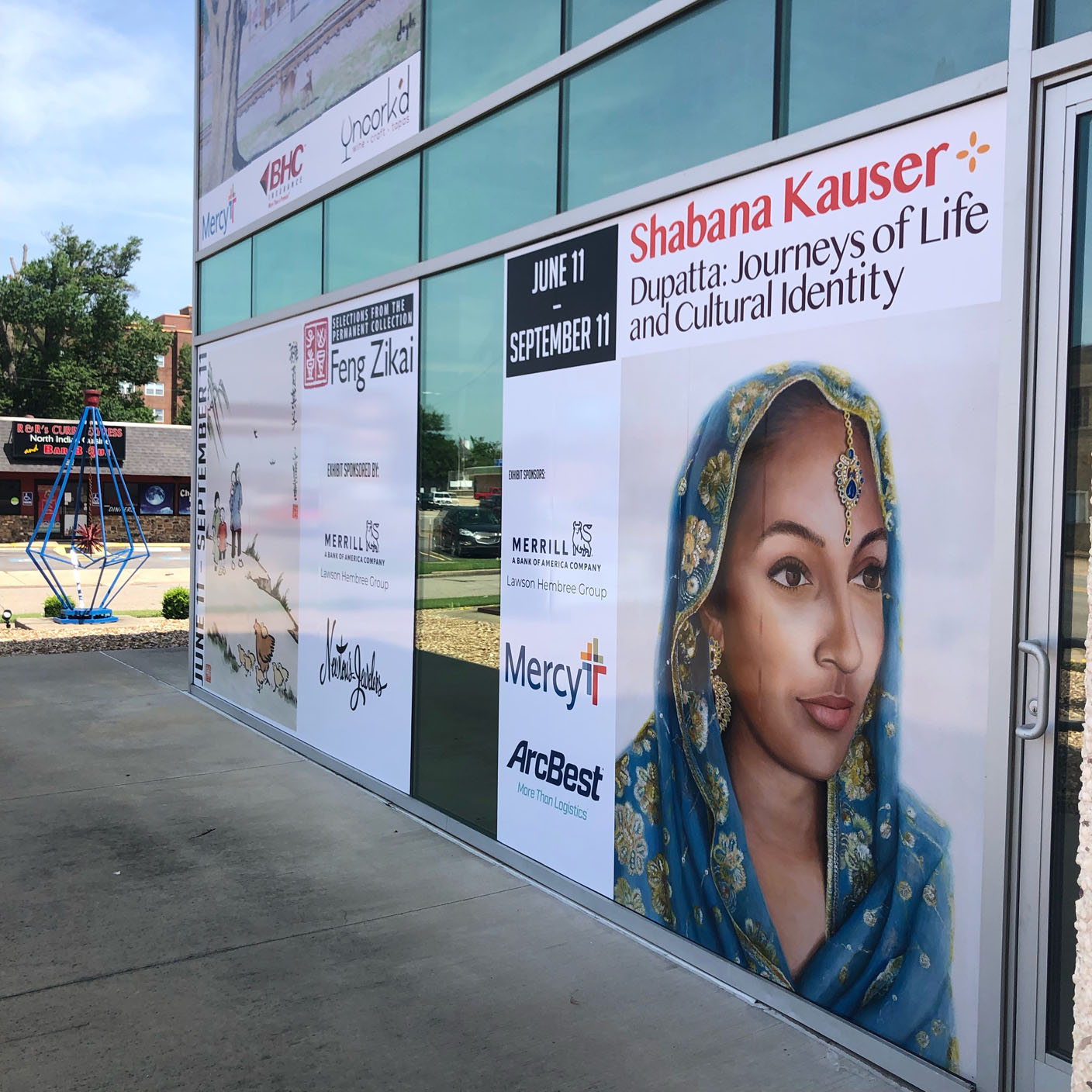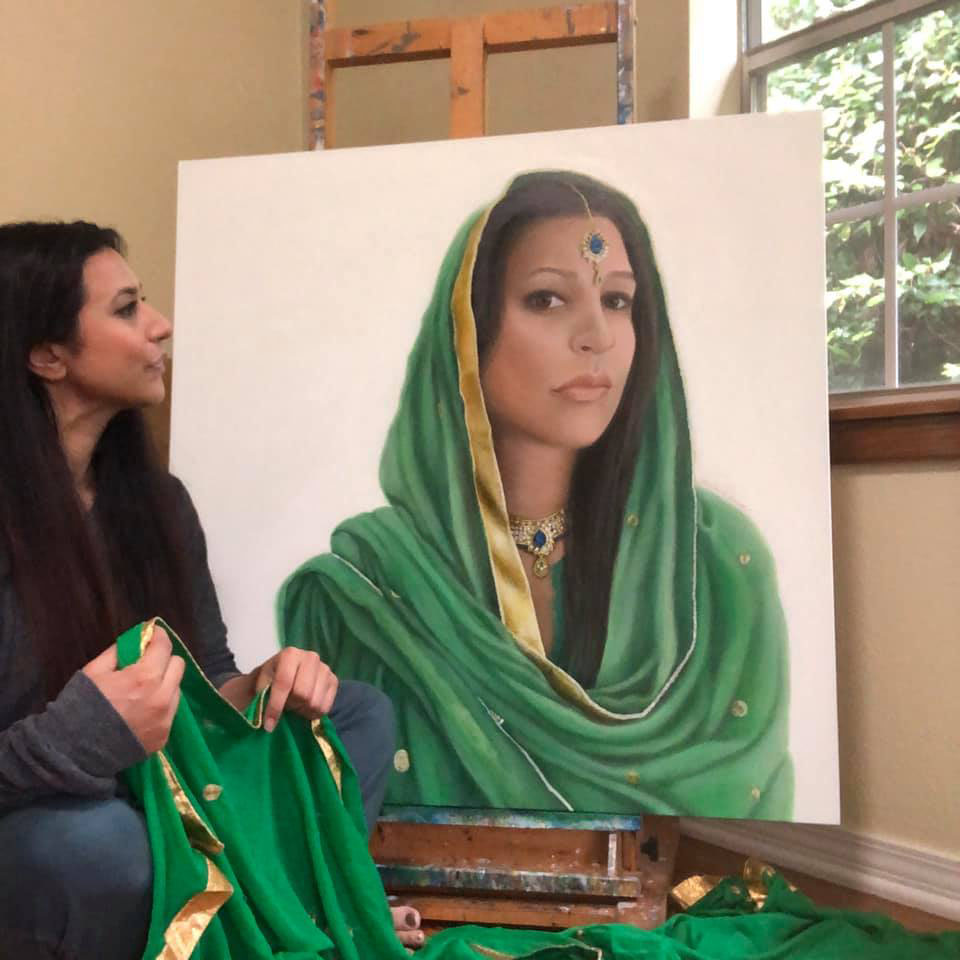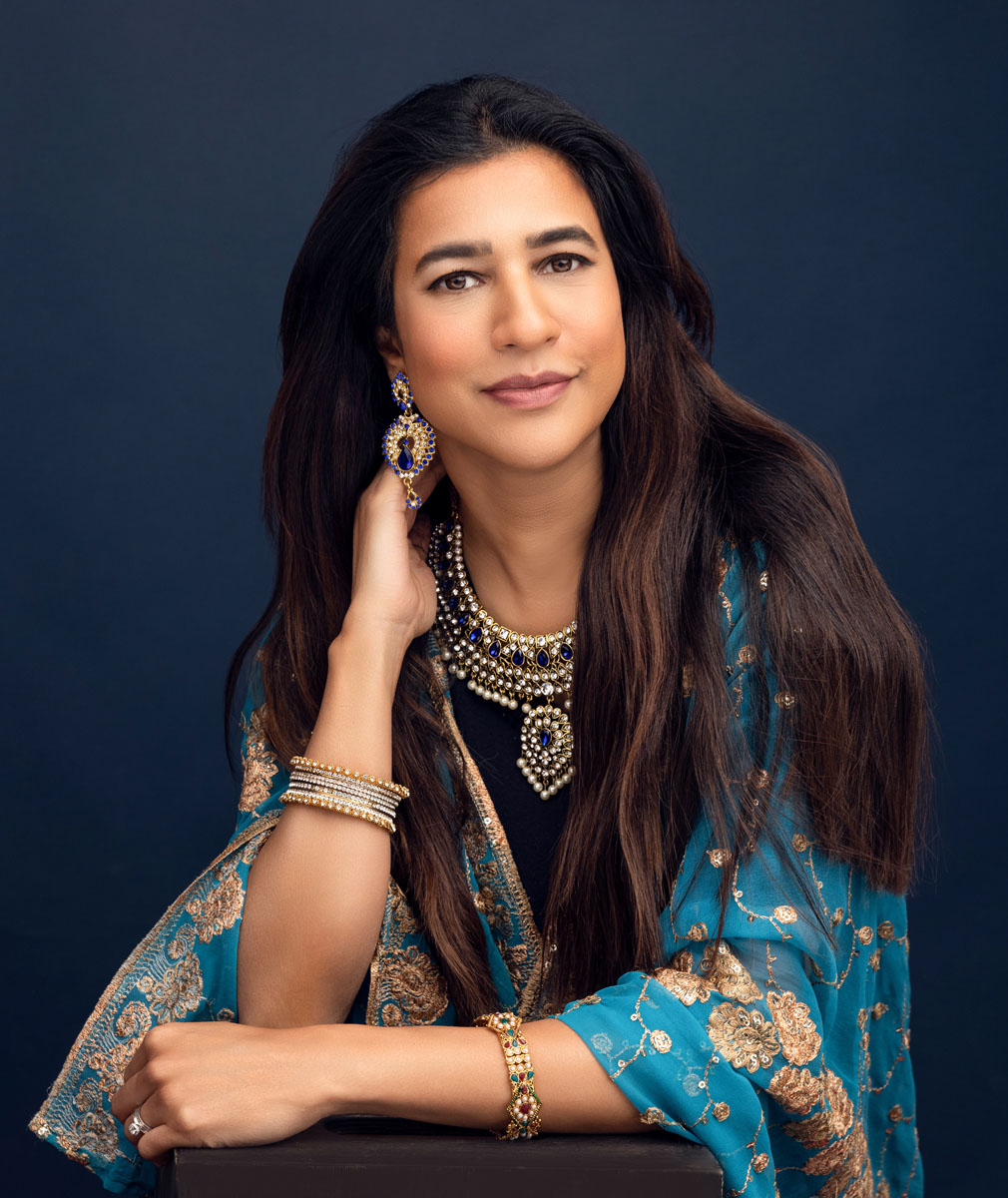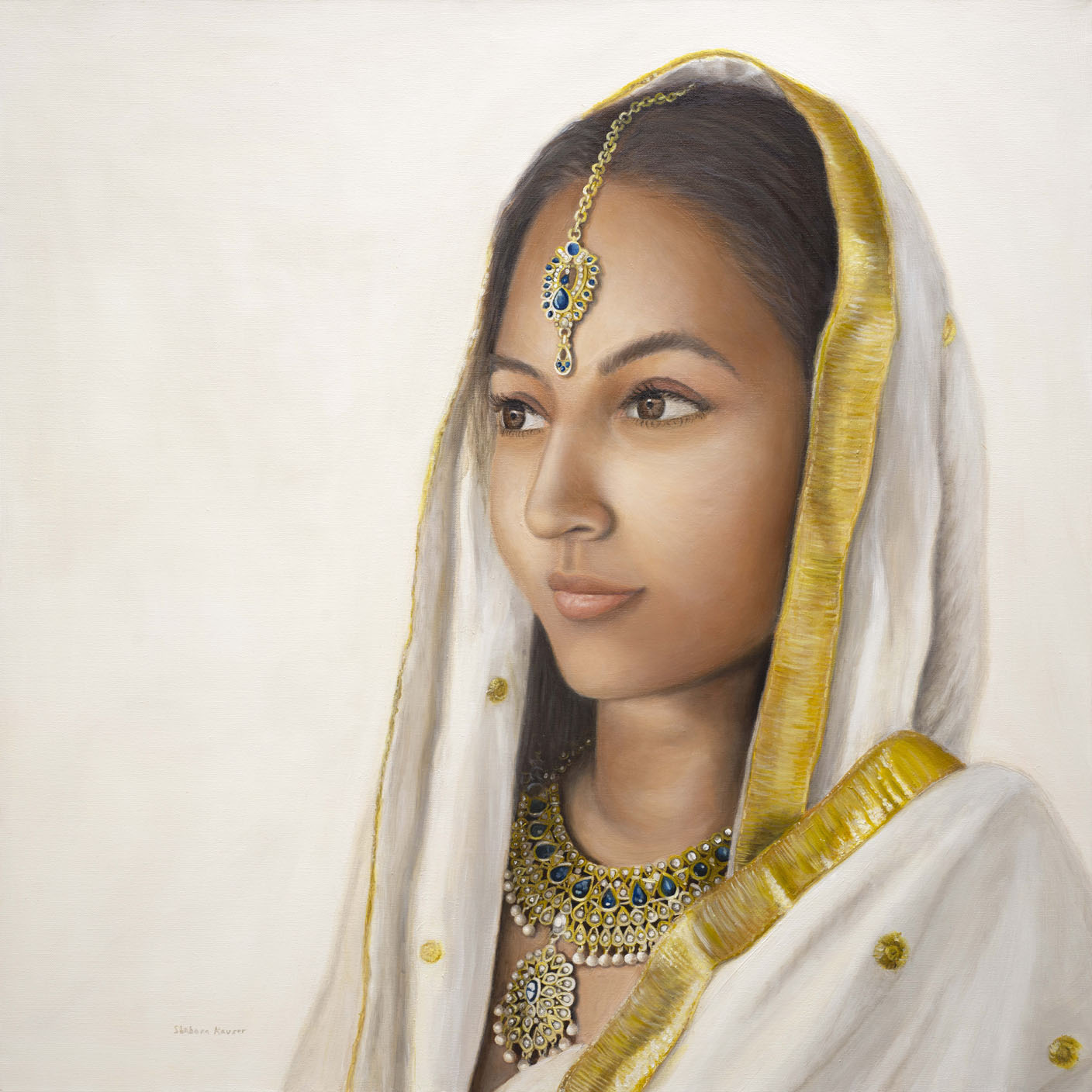Shabana Kauser's artwork exists at an intersection of time, place, gender and culture that might, without hyperbole, be called unique.
She is from South Asia -- Kashmir, to be specific -- and grew up in the 1990s in London. But despite their immigration, her family "held onto traditions and values they knew," expecting her to "marry someone of my parents' choice, a man I had never met, never seen, didn't know anything about, fit into an expected role of a housewife and conform." Neither did they encourage her creative aspirations, even though her mother was a talented seamstress who custom made the traditional "Shalwaar Kameez," which Kauser describes as a tunic top, pants and a dupatta (traditional scarf) to match the outfit.
"I embraced both cultures, [but] my path was always different to my parents' generation and many around me," she says. "As a first-generation immigrant, those constant challenges of belonging and acceptance existed in both cultures. At the age of 21, I rejected what was expected from me, finding the courage to stand up to my parents and an entire community.
"I was fortunate to live in a country that gave me choices, and the freedom to carve my journey," Kauser goes on. "I have always struggled with conformity. Being on the receiving end of sexism and racism has been present all my life. Having choices, following my own decisions and path has been survival."
Although she put art on the back burner, Kauser excelled in another non-traditional career for women, earning a bachelor's degree in Information Technology and a master's in Information Management. Then her life took a turn even she could not have predicted.
"My husband was offered a work opportunity in Northwest Arkansas in 2008. We left the bright lights of London, our careers in the corporate world ... took the leap of faith and moved to the U.S. to start a new life.
"Sadly, for me that journey had a bumpy start," Kauser explains. "Due to visa laws at the time, I was unable to work for about seven years. ... It was only until I discovered my passion for creating, things changed for the better."
Kauser says her art is "directly influenced" by everything in her life up to that moment. But she also embraces the opportunity to be "a living female artist of color."
"Female artists represent a small percentage of works shown in museums and top tier galleries," she explains. "The number of artists of color present in that sector of the arts is also low. Now imagine, being female and South Asian, that percentage is even lower. I am proud to keep fighting for my work, for it to be seen in venues where I am underrepresented.
"Being a Pakistani woman in America, where I can express myself through my art, so far has been very powerful. Each one of the stories behind my work has a universal message of strength, courage, determination, uncertainty, belonging and acceptance. That resonates with people regardless of their gender or background."
 Kauser's "Dupatta #7" features a blue dupatta and traditional bangles. She grew up in a household where her mother was a talented seamstress who custom made the traditional “Shalwaar Kameez,” which Kauser describes as a tunic top, pants and a dupatta (traditional scarf) to match the outfit. (Courtesy Image)
Kauser's "Dupatta #7" features a blue dupatta and traditional bangles. She grew up in a household where her mother was a talented seamstress who custom made the traditional “Shalwaar Kameez,” which Kauser describes as a tunic top, pants and a dupatta (traditional scarf) to match the outfit. (Courtesy Image)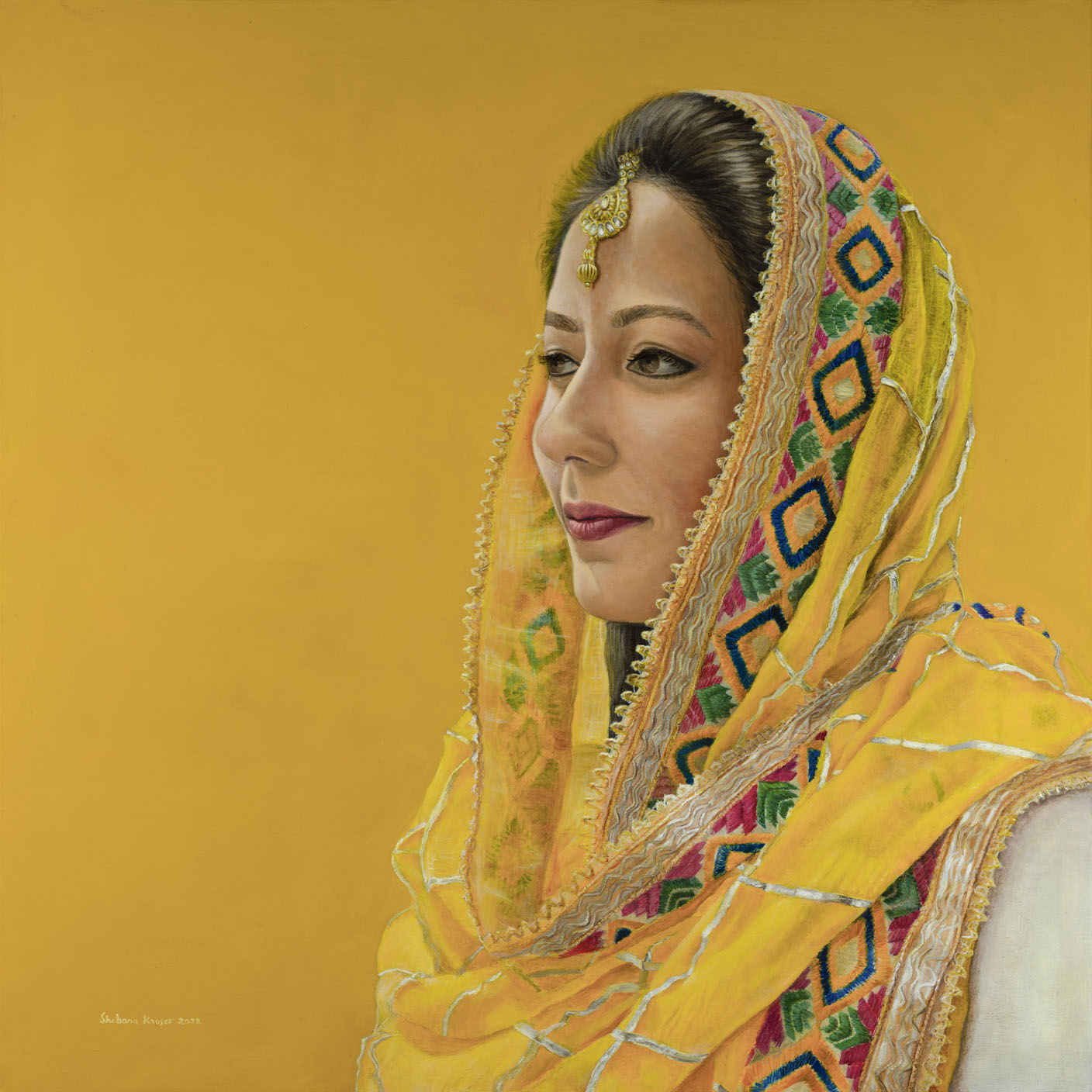 "I have several works that I finished in time and especially for this exhibition," Shabana Kauser says. "One of the portraits, created in oils, includes a yellow dupatta and a yellow background. The painting is titled ‘Dupatta #8.' My model is a South Asian immigrant from India; she lives in Northwest Arkansas. I loved her energy and passion for fabrics. I enjoyed working with her, and learning about her journey to the U.S. I am pleased with the finished painting, and proud to include this portrait here." (Courtesy Image)
"I have several works that I finished in time and especially for this exhibition," Shabana Kauser says. "One of the portraits, created in oils, includes a yellow dupatta and a yellow background. The painting is titled ‘Dupatta #8.' My model is a South Asian immigrant from India; she lives in Northwest Arkansas. I loved her energy and passion for fabrics. I enjoyed working with her, and learning about her journey to the U.S. I am pleased with the finished painting, and proud to include this portrait here." (Courtesy Image)More News
NoneFAQ
‘Dupatta: Journeys of Life and Cultural Identity’
WHEN — Until Sept. 11; hours are Tuesday-Saturday, 11 a.m.-6 p.m., and Sunday, 1-5 p.m.
WHERE — Fort Smith Regional Art Museum
COST — Free
INFO — fsram.org and shabanakauserart.com

